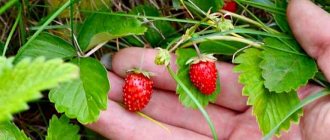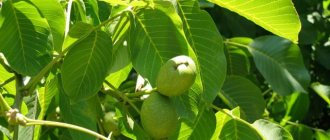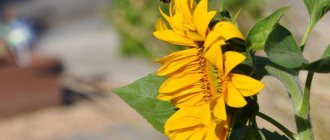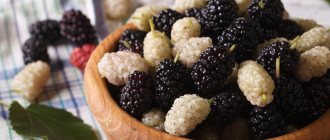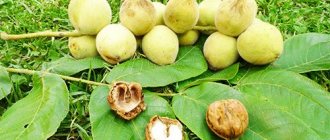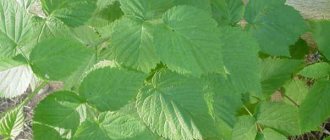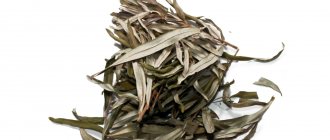What do mulberry leaves look like and what do they contain?
The average length of the leaves is 12 cm, the shape is ovoid, in the form of a blade. The location on the branch is the same. Color – dark green with a shiny surface. The lower part of the sheet is more matte and lighter. The benefits of mulberry leaves are associated with the substances included in the composition:
- sugar;
- carotene;
- resins;
- routine;
- coumarin;
- hyperoside;
- quercetin;
- tannins;
- nitrogen;
- sterols;
- various vitamins;
- essential oils that are similar to tea tree oil;
- fats;
- proteins.
Mulberry leaves contain calcium in active form; its amount in the leaves is 2 times greater than in cow's milk.
Important!
The leaves from the middle tier of the crown have the most valuable properties. They contain more fat, water, phosphorus, protein, and nitrogen.
Crown formation
Correct and timely pruning is one of the most important points of agricultural technology for this garden crop. To form a neat tree, all side shoots are pruned at a height of 0.5-1 m from the ground. Next, a spherical crown is formed, which can also have the shape of a bowl or broom. The best time for pruning is early spring, when the buds have not yet bloomed, but the air has warmed up to at least +10C. It is permissible to shorten the central trunk twice a year (the second time in the fall after the leaves have been shed). In addition to formative pruning, it is necessary to perform sanitary pruning, removing all thickened, inconveniently growing and unproductive old shoots.
Related article:
Apricot: conditions for survival in harsh climates
If desired, the mulberry can be given a beautiful weeping shape by cutting the stems to the lower and side buds. However, this will reduce its yield.
Medicinal properties of leaves
Decoctions, teas, tinctures, and ointments are prepared from mulberry leaves. Decoctions and teas normalize carbohydrate and fat metabolism, reduce the amount of “bad” cholesterol, which reduces the likelihood of developing atherosclerotic plaques. Tea made from mulberry leaves is useful for diabetes, as it normalizes blood sugar levels. Decoctions have an antiseptic and expectorant effect.
The decoction can be used to gargle, treat wounds to destroy pathogens, relieve swelling from tissues, and suppress the inflammatory process. For a dry, painful cough with sputum that is difficult to separate, taking a decoction helps improve its clearance and get rid of the cough. For colds, it alleviates the general condition and reduces temperature.
Tincture of mulberry leaves is also effective for diabetes. It lowers blood glucose levels, stabilizes blood pressure, reduces temperature during colds, and relieves cough. Ointments are used externally for inflammatory processes on the skin, eczema, skin tuberculosis, boils, acne. Dry leaves can be added to food to enrich it with useful substances.
Diseases and pests
Resistance to diseases and pests is not the strong point of mulberry, so it requires systemic protective measures. It is most often affected by the mulberry moth, mealybug, and moth; its roots are often eaten by mole crickets; in dry seasons, spider mites may appear. The most common mulberry diseases are brown rot, varieties of bacteriosis, powdery mildew, wilt (verticillium), as well as curly small leaves and root rot.
Related article:
Pine trees on the site: varieties and varieties for planting
As a systemic protection, it is recommended to timely change the mulch, dig up the tree trunk circle within a radius of 1 m, regularly inspect branches and leaves, and destroy insects and diseased plants throughout the entire area. It is better to carefully remove the peeling bark, preventing the formation of cracks that are convenient for laying larvae. In case of infection, industrial insecticides and fungicides are used in accordance with the manufacturer's recommendations.
The benefits and harms of tea, decoctions of mulberry leaves
Tea and decoctions of mulberry leaves can bring not only benefits, but also harm. Their regular consumption in large quantities can lead to prolonged diarrhea and severe dehydration. Some people experience allergic reactions; as a rule, this occurs after 1-2 doses and indicates intolerance of the body to the components of the mulberry tree.
There is evidence that the mulberry tree can absorb harmful substances from the air and radioactive elements if the mulberry grows in an environmentally unfavorable, polluted environment. If a person prepares medicinal decoctions from raw materials from such a tree, harmful substances will enter the body. Medicinal raw materials from mulberry are contraindicated for people with hypersensitivity to the seedling. What is the body’s tolerance to mulberry leaves can be found out only after using products made from it.
On the first day of use, it is recommended to take half the required amount of tincture or tea. In the absence of negative manifestations in the form of abdominal pain, abnormal bowel movements, rashes, itching on the skin, you can use the required amount of the prepared product at the next dose. When using the ointment, it is first rubbed onto a small area of healthy skin; if there is no discomfort, it is applied to the affected area for half an hour.
Important!
When buying mulberry leaves at the market, it is unknown whether the tree grew in a favorable zone, so it is better to purchase mulberry components in pharmacies.
Contraindications
The fruits, leaves and bark of mulberry are endowed with many beneficial properties, but there is also a list of contraindications (it is the same for women and men). You should not eat mulberries immediately after meals or with other foods. Sugar in the composition causes increased fermentation, bloating and gas formation.
Read also Lunar calendar summer cottage
You should limit your consumption of sweet fruits:
- people suffering from type II diabetes (in case of type I diabetes, they should be excluded completely);
- with a tendency to chronic diarrhea;
- in case of intolerance to components.
A number of cautions apply to mulberries purchased at the market “from hand”. Mulberry trees often grow near large roads, so they accumulate a lot of harmful substances, and the berries become covered with dust. It is difficult to pick berries from tall trees, so fallen fruits are simply collected from roadsides for sale. It is simply impossible to thoroughly wash soft berries, so you should buy mulberries only from trusted suppliers or harvest them yourself.
Mulberry leaf recipes
The beneficial properties of mulberries are used to treat various diseases. Prepared decoctions and infusions are not an alternative to drug treatment, but can be a complement to it. Dried leaves can be added to porridges and other dishes 2 times a day in the amount of ½ teaspoon to enrich the body with vitamins A, B, C, and organic acids.
Recipes from mulberry leaves for diabetes
Mulberry leaves help against diabetes by lowering blood glucose levels. There are several options for preparing them. For type 1 diabetes: 1 tbsp. l. dry leaves, pour 200 ml of boiling water, leave for 1 hour, filter. Take 4 times a day, 100 ml. For type 2 diabetes mellitus, 3 recipes are most popular:
- Two tablespoons of crushed dry leaves along with branches are poured into 200 ml of boiling water. Place on the fire, bring to a boil, remove from the stove, leave until the broth has cooled. The resulting liquid is filtered, mulberry decoction is taken 100 ml 3 times a day before meals.
- Two tablespoons of dry white mulberry leaves are poured into a thermos and 500 ml of boiling water is poured. Leave for 2 hours, during which time all the beneficial properties from the leaves will transfer into the water. Take 100 ml up to 3 times a day before meals when blood sugar increases.
- One dry mulberry root is poured into 1 liter of water and boiled for 20 minutes. Strain before use. Take no more than 500 ml of decoction per day, which is divided into 3 doses.
Decoctions of leaves and roots are stored in the refrigerator for no more than 3 days.
Mulberry leaf tea for pancreatic diseases
To reduce the severity of inflammatory processes in the pancreas, you can prepare healthy mulberry tea. One tablespoon of fresh leaves is poured into 1 glass of hot water. Drink like regular tea, you can add sugar and honey to taste. Drink no more than 3 glasses per day. You can take it for a month, after a break of 7-10 days, you can repeat the dose.
Features of fruiting
The mulberry tree begins to produce a full harvest from the age of 4-5 years. However, this applies only to dioecious specimens, in addition to which the culture is represented by monoecious and trioecious plants. There is no need to plant trees of different sexes on the site, since mulberries are prone to self-pollination due to the presence of both male and female flowers on the same stem. Their combination can vary until the formation of only female flowers or exclusively male pollinators. Due to the unusual sexual organization of the crop, to guarantee fruiting, it is recommended to buy seedlings of the 3rd or 4th year of life, on which the first single ovaries have already formed. You can distinguish fruiting seedlings during the flowering period by the type of flowers. The female ones are smaller and more inconspicuous; during the flowering process they form earrings.
Related article:
Pine trees on the site: varieties and varieties for planting
Precautionary measures
Leaf blades, bark, and branches of mulberry have medicinal properties, despite this, precautions are necessary when consuming decoctions, teas, and tinctures. If prepared mulberry-based products are taken for the first time, you need to monitor the body’s reaction. Allergic manifestations are possible, therefore, at the first dose, the amount of the prepared product per dose is divided in half. If a rash or itching appears on the body, you should stop using mulberry-based products.
During treatment, you should not abuse medicinal raw materials; take them according to the recommendations in the recipes. An overdose is possible, which can manifest as bowel dysfunction (usually diarrhea), dehydration of the body, since the leaves, fruits, and bark of mulberry have a mild diuretic effect. A mulberry tree can accumulate radioactive substances if the tree grows in an unfavorable area. This fact must be taken into account when collecting raw materials.
An absolute contraindication to the use of mulberries is individual intolerance to the body. Take medicinal raw materials with caution in case of renal failure, as the load on the organ increases. For diabetes mellitus, mulberry treatment can be combined with insulin medications. Use with caution for persistent hypertension, since mulberry can constrict blood vessels, thereby triggering a hypertensive crisis.
Landing Features
The time for planting seedlings is traditionally spring before the start of active sap flow or the beginning of autumn, until the cold seasonal rains begin. When choosing a location, preference should be given to windless and well-lit areas; only partial shading is acceptable. The south side of the house or a steep slope is ideal, which will additionally serve to strengthen it and protect it from the winds.
Soil requirements
Loose loam or sandy loam soil is ideal for planting. Wetlands and excessively dry sandy soils are completely unacceptable for this agricultural crop. The mulberry tree has fairly strict requirements for the groundwater level; it must lie no closer than 1.5 m to the surface of the site.
When choosing a place for planting, it is necessary to take into account the long life span of the mulberry tree; it will be impossible to replant it in adulthood.
Planting scheme
The size of the planting holes is 0.5 m and 0.7 m in depth and width, respectively. It is recommended to prepare them in advance, 2-3 weeks before the planned planting. For tall standard varieties, a 5x4 m grid is recommended; bush varieties can be planted closer, retreating 2-3 m.
Related article:
What fruit trees should be planted in the garden?
The soil selected from the hole is mixed with organic matter (humus, compost) and poured into the center of the hole in a heap. The seedling is placed on it in such a way that after shrinkage the root collar is flush with the ground. The roots are carefully spread along the slopes of the embankment, after which the hole is carefully filled with soil.
The mulberry root system requires very careful handling due to its high fragility.
